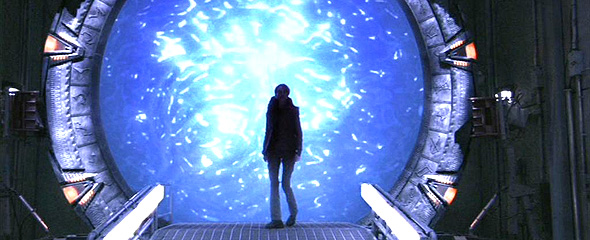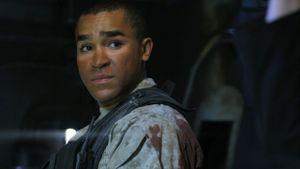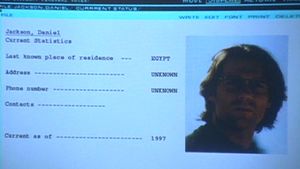Stargate Canon
The Stargate Omnipedia strives to remain strictly within the official canon of the fictional Stargate universe.
Canon might be defined simply as what really happened. What does this entail? What counts as "canon?" And what particular challenges do chroniclers such as the Stargate Omnipedia face? We'll explore these issues in this essay.
In some fictional universes "canon" (a word deriving from an ancient unit of measurement, or standard) is restricted by the creators to only what appears on screen. Famously, this was Gene Roddenberry's decision with respect to Star Trek. In others canon might be extended by The Powers That Be to include other forms of media including certain novels, comic books, video games, etc. This is the case for the Star Wars universe, where George Lucas (and later the Lucasfilm Story Group) carefully maintained plot and character continuity across multiple media endorsed as canonical. And for Babylon 5, creator J. Michael Straczynski declared the TV shows, movies, and some of the novels to be canon.
What is the rule for Stargate? That's a little tougher to answer, since there are now live-action productions in which the original creators are not involved (Stargate Origins) and MGM currently maintains no formal, cross-media story group devoted to canon. Licensed media tie-ins do go through a rigorous approval process, but function as a sort of unofficial "extended universe." That these cannot all be canon is made most clear in the continuation of the Atlantis storyline after the show's final episode; two completely different stories are told in Fandemonium's "Legacy" novels and in American Mythology's "Back to Pegasus" comics.
Canon is what happens on screen in a live-action production. MGM Consumer Products confirms to GateWorld that Stargate's existing novels, comics, magazines, role-playing games, etc. should not be regarded as official canon. Thus storylines, character names and backgrounds, etc. cannot be derived from these sources.
THE FEATURE FILM
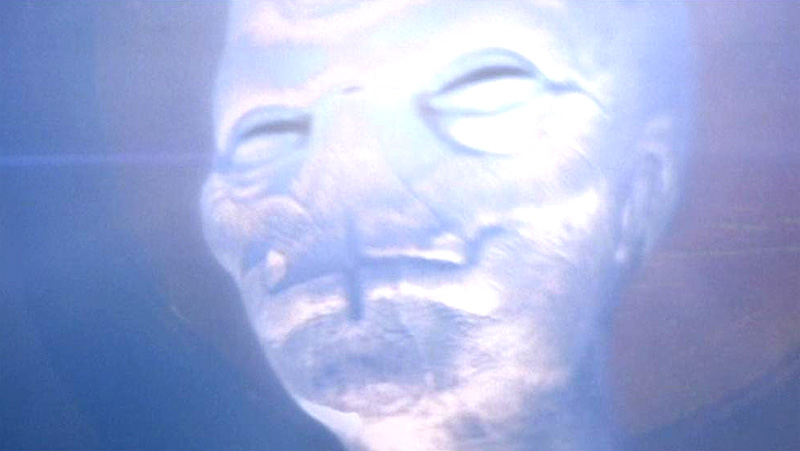 Dean Devlin and Roland Emmerich's 1994 film Stargate informs the larger Stargate television mythology in important ways -- but the show's producers deliberately changed some character names and plot points from the very beginning. This ranges from the spelling of names (O'Neil, Sha'uri, etc.), to the location of Abydos relative to Earth (the "Kaliem Galaxy"), to the mountain in which the Stargate is housed (moved from Creek Mountain to Cheyenne Mountain), to major points about Ra, his race, and the warriors in his service.
Dean Devlin and Roland Emmerich's 1994 film Stargate informs the larger Stargate television mythology in important ways -- but the show's producers deliberately changed some character names and plot points from the very beginning. This ranges from the spelling of names (O'Neil, Sha'uri, etc.), to the location of Abydos relative to Earth (the "Kaliem Galaxy"), to the mountain in which the Stargate is housed (moved from Creek Mountain to Cheyenne Mountain), to major points about Ra, his race, and the warriors in his service.
Because these changes are deliberate and maintained with consistency through the television series, while the movie is regarded as canon the TV series always trumps the film in matters of story and spelling.
There are also multiple releases of the film, in which some details are changed -- namely in the director's cut, which adds some additional footage.
STARGATE INFINITY
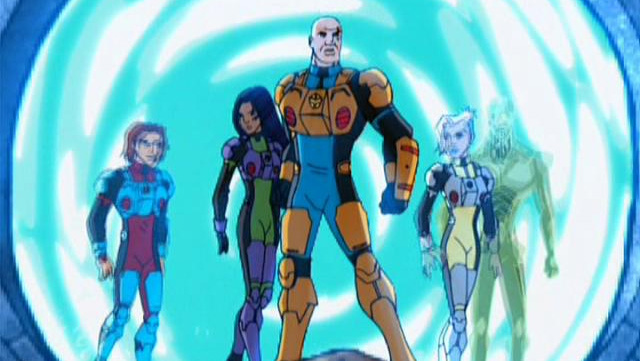 The writers and producers of the live-action shows and movies had no involvement with the animated series Stargate Infinity, which aired from 2002 to 2003. Set several decades in Stargate Command's future, it ended up stepping on some story points from the canonical universe (including the characters' knowledge of who the Ancients are).
The writers and producers of the live-action shows and movies had no involvement with the animated series Stargate Infinity, which aired from 2002 to 2003. Set several decades in Stargate Command's future, it ended up stepping on some story points from the canonical universe (including the characters' knowledge of who the Ancients are).
Per executive producer Brad Wright (and MGM), it should not be regarded as canon.
WEBISODES
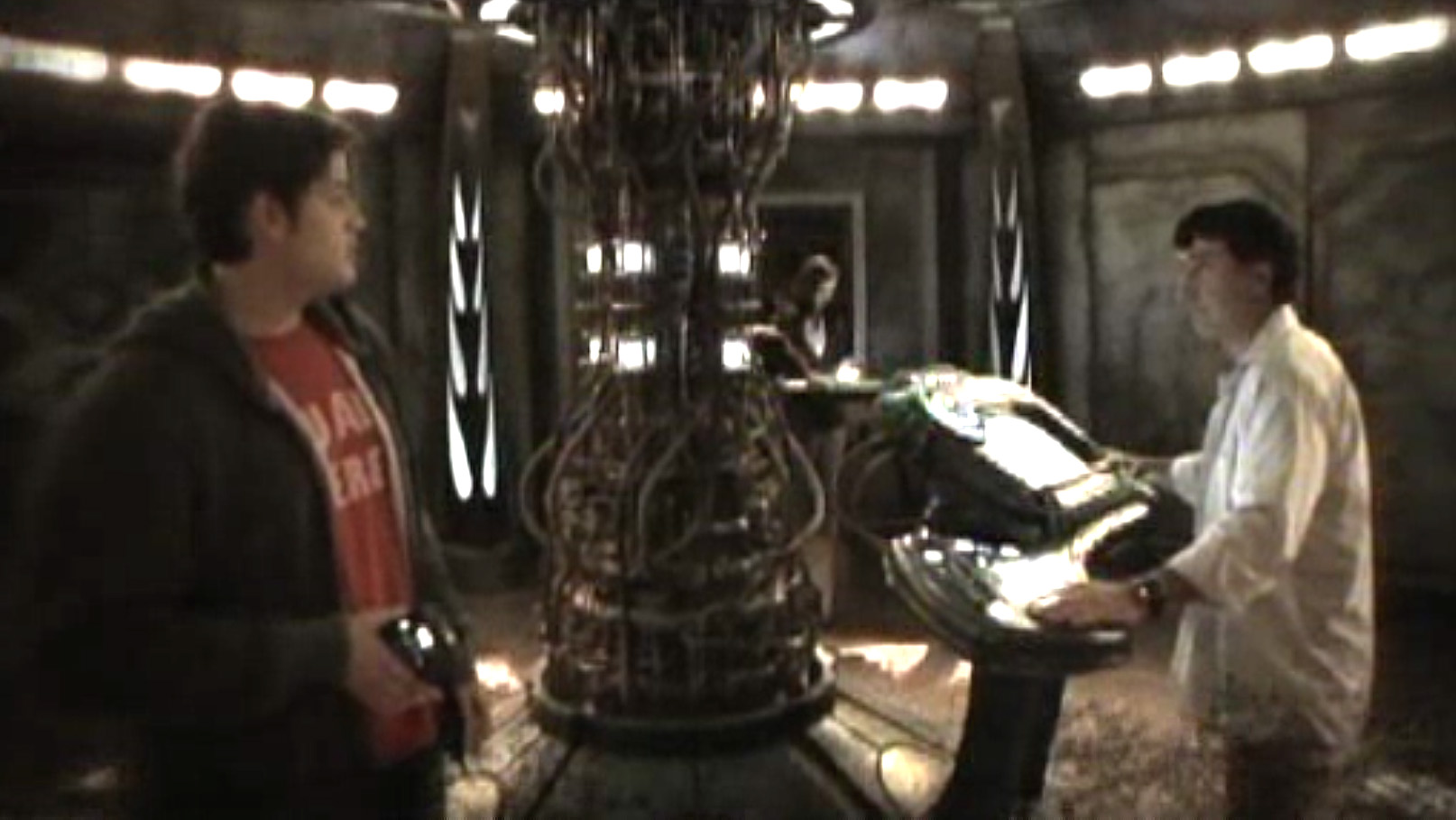 During the first season of Stargate Universe the Vancouver production team wrote, filmed, and produced 34 short-form "Kino" webisodes plus six Daniel Jackson "educational videos" for distribution on the Internet (and eventually the show's DVD and Blu-ray releases). As these are official, live-action products from the same team creating the television series, they should be considered canon.
During the first season of Stargate Universe the Vancouver production team wrote, filmed, and produced 34 short-form "Kino" webisodes plus six Daniel Jackson "educational videos" for distribution on the Internet (and eventually the show's DVD and Blu-ray releases). As these are official, live-action products from the same team creating the television series, they should be considered canon.
The 2018 Web series Stargate Origins was originally released as 10 webisodes at StargateCommand.co, and then released at digital retailers as the feature-length cut Stargate Origins: Catherine. For this prequel story (set in the late 1930s) producers attempted to hew closely to established canon, taking the 1994 feature as their chief informant but also including elements from the television universe (for example, a Harcesis child).
However the producers of the TV universe were not involved -- and many viewers criticized the series for altering significant parts of the mythology's history (most notably that Catherine Langford had gone through the gate as a young woman, but had her memory of the events wiped). This leaves the series' status as canonical somewhat vulnerable.
In the end, the story's memory-wipe conclusion and its six decades of distance from the TV universe makes the canon question somewhat moot. Regardless of whether it happened in-universe or not, the story has no measurable effects on any later events. Because it is an official, live-action production from MGM, for the Omnipedia Stargate Origins is treated as canon.
SOURCE HIERARCHY
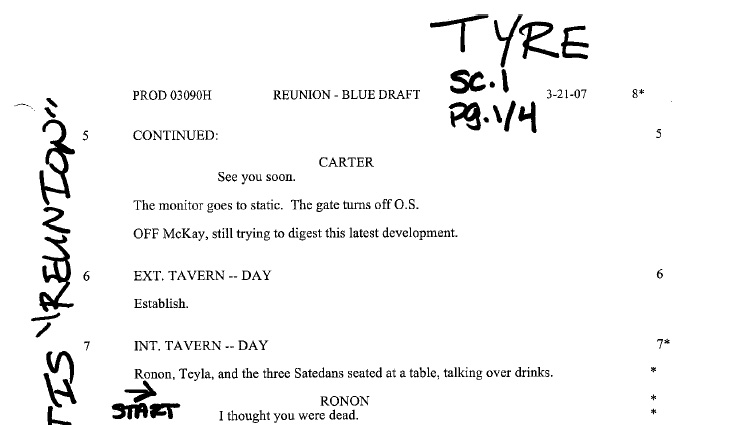 Not all sources are considered equal for purposes of canon, as different people down the production line end up responsible for things like: screenwriting and script revisions; legal clearances on the use of names; costuming and production design; end credits; closed captioning; and Web sites and other marketing material, including from both MGM itself and its broadcast partners. Therefore, while strictly speaking only what appears on screen is canon, certain secondary resources can add clarifications -- mainly in the form of the spelling of names, or which actor goes with which named character in a scene.
Not all sources are considered equal for purposes of canon, as different people down the production line end up responsible for things like: screenwriting and script revisions; legal clearances on the use of names; costuming and production design; end credits; closed captioning; and Web sites and other marketing material, including from both MGM itself and its broadcast partners. Therefore, while strictly speaking only what appears on screen is canon, certain secondary resources can add clarifications -- mainly in the form of the spelling of names, or which actor goes with which named character in a scene.
For the purposes of establishing details within canon, or in sufficiently close proximity to canon, the Stargate Omnipedia adheres to sources in the following descending order of authority:
- On-screen dialogue (including translated subtitles)
- On-screen visual cues (such as name tags and computer displays)
- On-screen episode credits
- Episode scripts and casting documents (where available)
- Closed captions
Note that material higher up on this list takes priority over what is lower down. Closed captions, for example, are usually produced by third-party companies who might have access to an episode's script, but might not always match the spelling of an alien name. (This is also true of the so-called "dialogue scripts" published by MGM's official Stargate site some years ago -- which are not the same as the actual production scripts.) In cases where a name appears differently between the end credits and the captions, for example, the credits take precedence; but if a character gets one name on screen but another in the credits (such as Turner), what is on screen wins.
In all cases, in-universe evidence (i.e. on screen) has priority over out-of-universe information.
Sometimes spellings change within the same source (e.g. captions) from one episode to the next. In those cases we've usually gone with what was established first -- unless a name is used exceptionally often with a changed spelling that then remains consistent.
Note that scripts are of relatively limited value in establishing canon, including even something as simple as a character's name. There are two reasons for this. First, episodes often change in the production process, with some material changed in later drafts or cut for time in the editing bay. Since these events do not make it to screen (and the writers are free to act as if such events never happened), material cut from a script or even a filmed episode are not canon. (They would become canon if, say, a re-cut of the episode were later released -- as, for example, with the two cuts of "Children of the Gods" or "Threads.")
Second, all character names must pass through legal clearances after the script is written before they become final. It is extraordinarily common for names to be changed (usually because it is found that a similar person with the same name exists in real life). Scripts are the beginning of the production process, not the end.
In some cases, however, the script is the only source for intel (such as the name of the Goa'uld Svarog, who attended the System Lord summit; or Varta, the Galaran Emissary). In this case there is no reason to disregard it.
Note that official Web sites and other marketing material do not appear on this list at all. Based on our experience with the industry we know that this material is often at such a distance from the production that it should have no bearing on what is regarded as established canon.
The same goes for comments made by actors or production personnel -- even up to the executive producers and the writer of a given episode! (This applies equally to official materials published by MGM, from Web sites and interviews to episode commentaries and DVD behind-the-scenes featurettes.) If something has not happened on screen, future creators are free to change what a writer might have had in his head. An example of this pertains to the final fate of Zipacna: Joseph Mallozzi told fans that the character was killed in the events following SG-1 Season Five's "Last Stand." But since this did not happen on screen, future writers could bring back the character without violating any established continuity.
CANON CONFLICTS (AND REVISION)
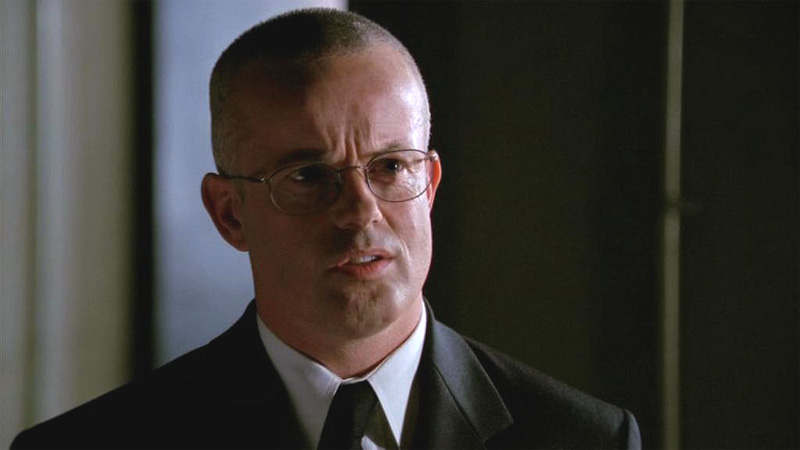 Because television and film production is such a sprawling undertaking, involving numerous departments and hundreds of creative and technical people, unintended variations and outright conflicts are bound to creep in. It may be some inconsistent dialogue only the most hardcore fan would pick up on. (Ever notice that Cameron Mitchell rattled off the designation of the "Crystal Skull" planet wrong?) Footage may be reused in another episode (e.g. the dialing sequence, which would wrongly imply that two different planets share the same gate address). Or an actor might be given a costume with one name on it, and show up in the end credits with a different name (thus Turner becomes "Technician Davis").
Because television and film production is such a sprawling undertaking, involving numerous departments and hundreds of creative and technical people, unintended variations and outright conflicts are bound to creep in. It may be some inconsistent dialogue only the most hardcore fan would pick up on. (Ever notice that Cameron Mitchell rattled off the designation of the "Crystal Skull" planet wrong?) Footage may be reused in another episode (e.g. the dialing sequence, which would wrongly imply that two different planets share the same gate address). Or an actor might be given a costume with one name on it, and show up in the end credits with a different name (thus Turner becomes "Technician Davis").
In some cases these differences can be explained away with a bit of creative speculation (perhaps the character got married and changed her surname?). In others it's simply a matter of taking the more authoritative source over the lesser. And very rarely the show simply appears to have made a mistake that needs to be ignored -- such as in "Threads," when Sam intimates that her father Jacob's life was saved by the Tok'ra only four years earlier, rather than six. Hey, even Sam Carter is only human!
But on occasion canon seems to conflict with canon outright -- requiring a revision to be made. Actor Gary Jones' S.G.C. technician character goes all the way back to the beginning of Stargate SG-1, though for years he wasn't addressed by name or named in the show's credits. Viewers eventually spotted his name badge: "Davis." In Season Four's "2010" Richard Dean Anderson improvised a first name in the moment, and "Walter Davis" was born.
By the show's eighth season, however, MSgt. Davis had a new moniker: "Walter Harriman," evidently the result of some confusion over the years that co-star Don S. Davis ("General George Hammond") addressed Jones' character as "Airman" in a thick, Texas drawl. A revision to the Omnipedia was necessary, and today the canonical entry for Walter Harriman indicates a note about the original "Davis" reference.
DATES IN THE STARGATE UNIVERSE
Exact dates are notoriously difficult to fix in the Stargate universe, though we've gone to some lengths to provide a workable and accurate Stargate Timeline. The main challenge comes from the fact that the film was released in the United States in 1994 and carries an on-screen cue of "Present Day" (when Catherine recruits Daniel Jackson) -- but when Stargate SG-1 began airing in 1997 the premiere establishes that only one year has passed.
This could be smoothed over by dating "Children of the Gods" to 1995 -- except for the fact that, as the show went on, numerous references were made to the current year in which that episode was airing. Daniel observes the year 1997 in Season One's "There But For the Grace of God." Samantha Carter calls out the year as 1999 at the end of Season Two ("Out of Mind"). Even an episode airing in the year 2001 is titled "2001!" Other examples could be cited.
Many times character dialogue also suggests that it is safe to assume that one year of the TV show equals around one year in real time (e.g. references to the Stargate program being 10 years old in SG-1's tenth season). You can set your watch to Master Bra'tac's incremental bragging about how old he is throughout the series! Based on all of this data, we've decided to date the non-specific "Present Day" of the feature film to the year 1996 -- here once again allowing the TV series' minor continuity tweaks to take precedence.
NAMING THE UNNAMED
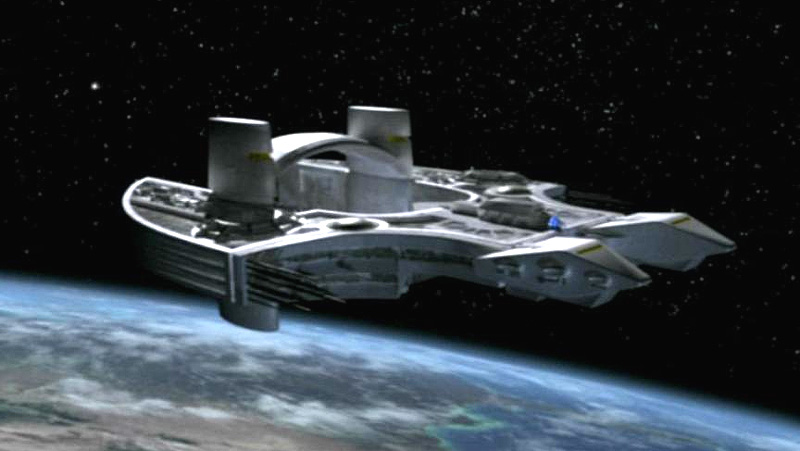 Many, many people, planets, races, and technologies in the Stargate universe don't ever receive an official name in any recognized source. In such instances the Stargate Omnipedia labels the entry with a suitable name (e.g. "cryogenic chamber," "Asgard science vessel"), using lowercase letters to indicate that the name is not a proper noun.
Many, many people, planets, races, and technologies in the Stargate universe don't ever receive an official name in any recognized source. In such instances the Stargate Omnipedia labels the entry with a suitable name (e.g. "cryogenic chamber," "Asgard science vessel"), using lowercase letters to indicate that the name is not a proper noun.
Similarly, as the names of species are often not stated, the Omnipedia commonly identifies a race according to the planet they live on (e.g. people of Chulak), or a representative character (e.g. Aris Boch's race), or other major distinguishing characteristic (e.g. mimetic aliens). The same goes for planets that are never named nor given an S.G.C. numerical designation (e.g. Korra's planet). We've also added redirects for other logical names you might plug into the search box.
A few high-profile species are especially difficult. We've included redirects in the Omnipedia in case you search for "Nakai" or "Vanir," as these adversaries were never officially named in a canonical source. But redirects should not be taken as verification of a name's canonical status.
CONCLUSIONS
Because it is limited to the on-screen, live-action productions, canonical detail in the Stargate universe is fairly easy to identify. But -- as the examples above attest -- canon is also a living organism. It grows and sometimes changes slightly over time, as new source material becomes available.
GateWorld and the Stargate Omnipedia will always strive to preserve and present the people, places, and things of Stargate as they appear in the franchise's official form.


